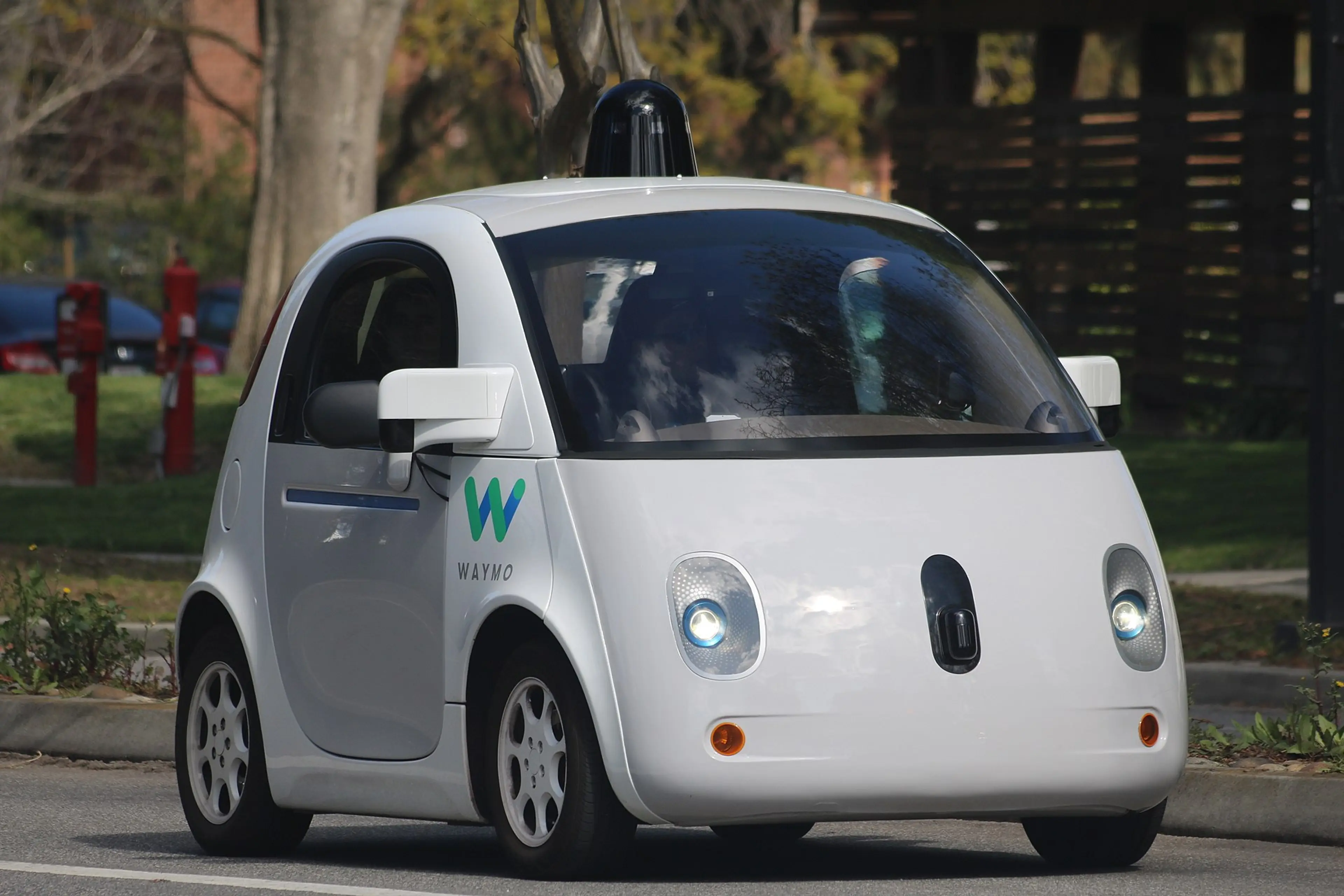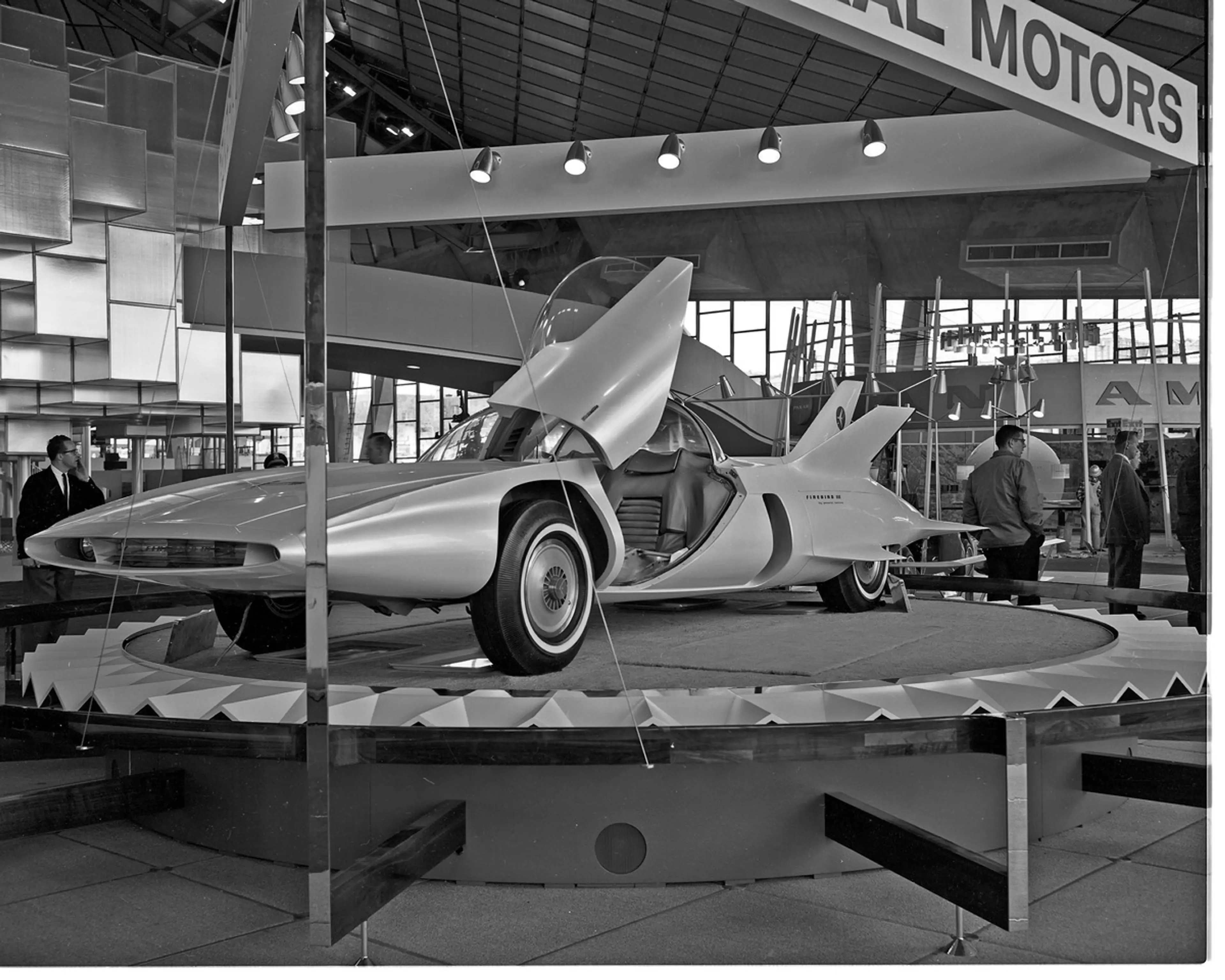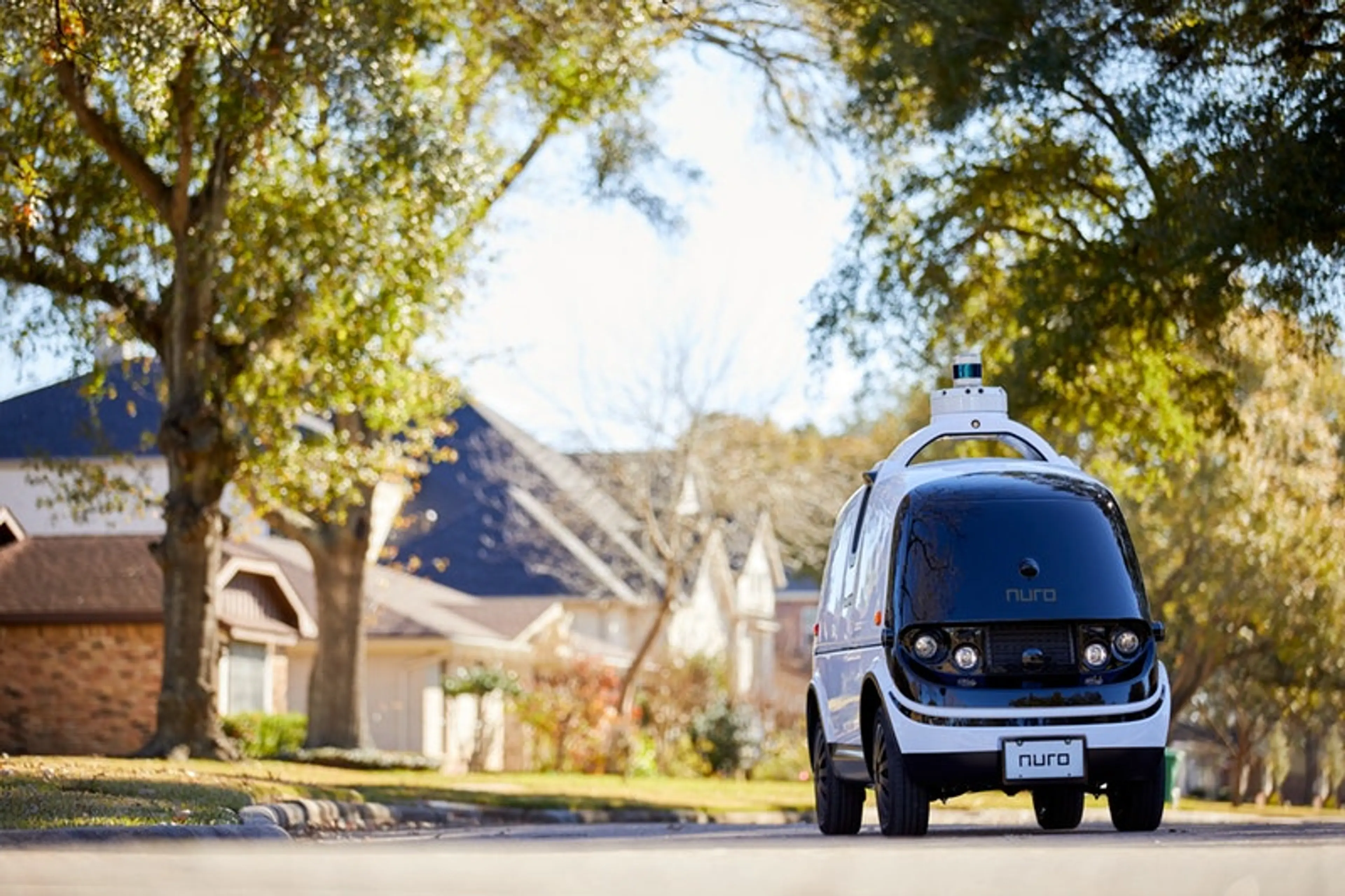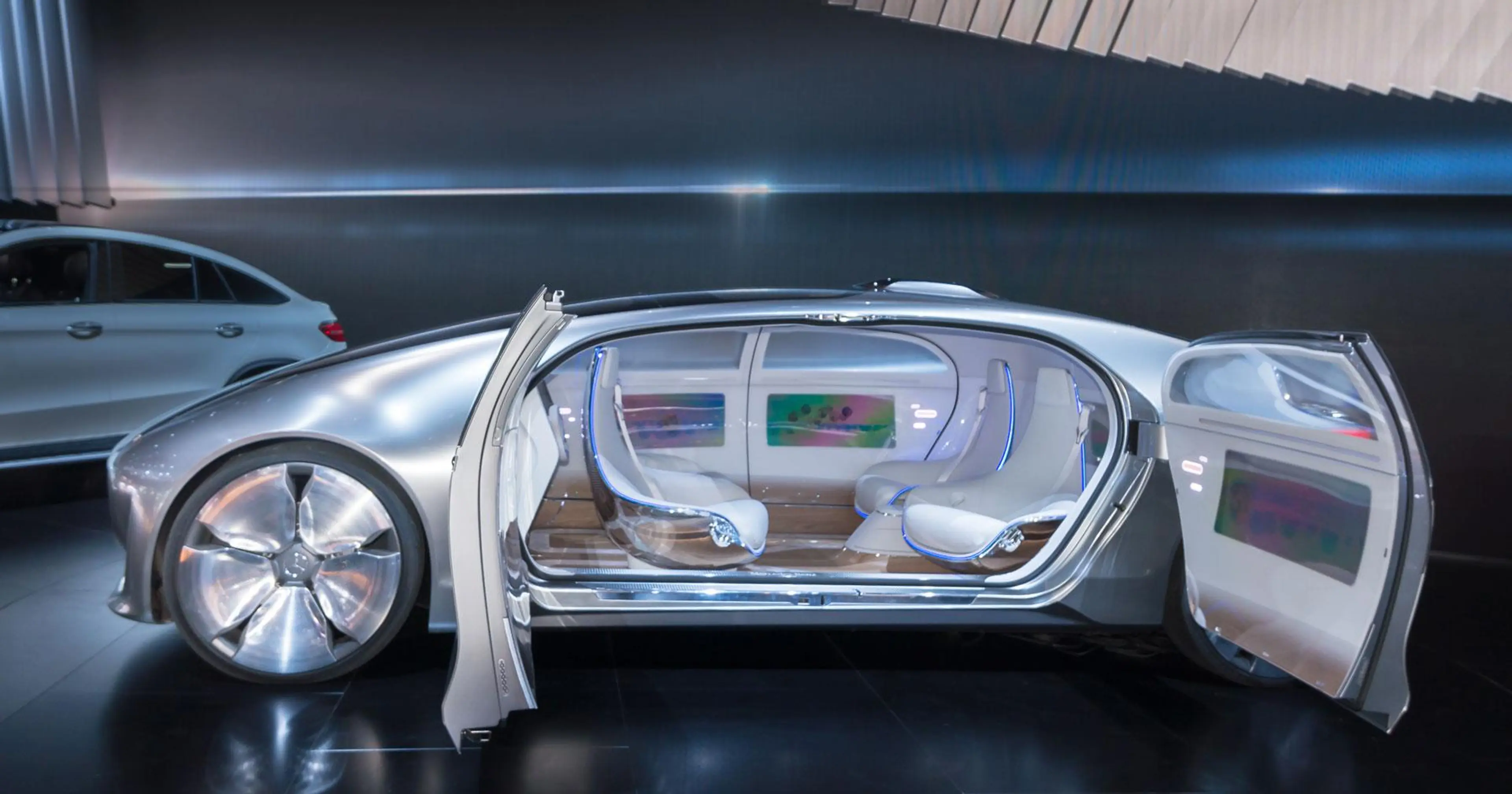Heads up: Our Ideas Factory has been refreshed, levelled up, and grown-up into Alphero Intelligence. Some of our old posts are pretty cool tho'. Check this one out.

- Autonomous vehicles technology is still advancing rapidly, and main automakers and tech companies are working on it.
- The problem is complex and we still need humans to be ready to intervene.
- Self-driving vehicles will reshape the manufacturing industry, city planning, insurance sector and many services that rely on transportation.
In 2012, Google’s co-founder Sergey Brin stated that in 5 years all of us “ordinary folks” would be able to have our very own self-driving cars. It’s now eight years later and, as you probably noticed, we haven’t quite got there yet.
Making predictions that don’t come to fruition is easy, but I for one am really disappointed that it’s 2020 and we’re still so far from the technology promised to us by the Jetsons. Why stop at cars? Once we have the systems in place, we could have self-driving beds on wheels, meeting rooms on wheels, breakfast bars, or anything else on wheels to better optimise our time spent commuting. In the meantime, we’re here to explore why we haven’t yet achieved self-driving vehicles, and settle on a definite timeline so we can all plan accordingly.
Why are they so exciting?

For most of us of a certain generation, things that do things without any input still feel like magic. Boxes with wheels and powered by engines (cars, trucks, motorbikes, buses) shaped our society for the past 100 years, and are a piece of technology that most of us rely upon to live our lives. For many, they symbolise freedom, wealth, fun, and —for most— practicality.
With economic growth and all the positive advancements of the last 30 years, cars proliferated across the globe. With that, old problems became bigger, new problems — straining infrastructure, oil consumption, affecting pedestrian spaces and everyone’s safety. And also, the more traffic we have, the more traffic there is.
Autonomous cars bring new thinking into many of these problems. Wide roads and intersections controlled by traffic lights exist because humans can’t be trusted to keep driving in narrow spaces and also can’t see that far ahead, so we need cushioning and management to create safety and order. We’re also terrible at following other cars in a way that is fuel-efficient, let alone smooth braking and acceleration. Put that together with the fact that most cars spend 95% of their life parked, and it becomes clear that we’re not spending automotive resources in the best way possible. Imagine how many car parks we wouldn’t need if so many of us didn’t own a car!
AI (Artificial Intelligence) systems theoretically can coordinate intersections, follow other cars closely, react to hazards quicker and, with that, reduce congestion and fuel usage. Safety is increased as cars can lower speed based on their surroundings, with the added benefit that computers will not get road rage (unless, that is, someone decides to code that in, which we hope regulators won’t allow).
All of this brings a brighter future to the issues we’re facing with the climate crisis, using time and resources more wisely while allowing new ride-sharing services to be created.
The present
Don’t you just want to hug it? Photo by Grendelkhan, source Wikimedia Commons
Self-driving cars have been roaming around just fine for the past couple years — Tesla’s autopilot is the most successful commercial one around at the time of writing, and Waymo (Google) is considered one of the most advanced in the market and are a popular commute option in certain US cities. Several other automakers and start-ups have their own experiments and services going on with various degrees of success, and most of the confusion comes from how the industry defines the level of autonomy for self-driving cars.
The industry uses a standard called Autonomous Driving Levels, to which 0 is the lowest (no automation, where most of our cars live) to 5 (full automation with zero interference from a driver). Functions such as cruise control tip a car into Level 1, and more driver aids and feedback get them into 2. Most self-driving cars in the market today are categorised 3-4, as they have many automated driving functions but still need input from a driver. Although some of these cars could theoretically operate at a fully autonomous Level 5, legislation is still to be created to let manufacturers let cars loose in that way (more below). The different levels of automation, different sensors, and manufacturer language create an environment where users are expecting more from the cars than they are capable, and where legislation and insurance get complicated.
For clarity, cars like Tesla have a fully autonomous mode (Auto Pilot) but still require a driver. A fully driverless car does away with steering wheels and pedals all together and has no input from a person while driving around.
The problem with humans
All companies selling autonomous vehicles to the general public are upfront about the fact that, even though they can go by themselves, users still need to be ready to take over the control of the car. The current regulation requires cars to let users override all controls, and the automakers are compliant and strict about that.
However, most accidents involving self-driving cars show that users have been distracted with other tasks at the time of the accident. Reports commonly reveal that drivers were caught sleeping, using their phone, or watching a video while in autopilot. In an interesting turn of events (where the car watches the driver), investigators can tell if the driver was engaged or not by analysing the driver’s expressions and actions using the monitoring systems built-in to some autonomous cars.
The self-driving AI systems are very advanced, but not so advanced yet that they can account for every situation in traffic, so we still need humans. But unfortunately all the hype is causing humans to misunderstand that and believe we’re already on full on no-intervention-needed Level 5 automated cars.
What are we missing?

The research on self-driving cars started many, many years ago (the 1920s to be more precise). The advancements of the past 20 years have given us the sensor technology and computing power to process all the variables and react to that.
Most of the testing by automakers have been done in closed controlled circuits, with no random traffic or pesky pedestrians or inconvenient road works. Although this provides a wealth of opportunity to develop the technology, once we come to the real world, a lot more happens. This has advanced in later years with more tests being done in cities and complex environments, and with semi-autonomous cars logging and reporting on their calculations even when the autopilot is off.
Having said that, reports have shown that a popular self-driving car dataset had missing information for pedestrians, resulting in pedestrians not being correctly identified. In other news, Canadians got so fed up with autonomous cars not being able to cope with snow that they created a dataset for training cars for adverse weather. “Hackers” managed to trick Tesla vehicles into going over the speed limit by taping over a 35 mph sign to look like 85 mph from a distance, which highlights how simple things can still be missed and create dangerous situations for people in and outside the car. This complexity is the main reason (alongside costs) why legislation and manufacturers are still cautious in making the technology mainstream.
The whole industry learns and adapts with every mistake, and can release software updates remotely to correct for shortcomings. Most experts believe that there’ll be a time when we’ll look at this phase of development much like how we now look back at when the first car was rolled out onto the roads and had to deal with horse-drawn carriages — an awkward but necessary phase of development that we inevitably overcame.
Regulation and safety

Cars like Tesla are marketed as “normal” cars but with autopilot function, and have a strong message about users staying on the wheel (much like they would for cruise control), so legislation has mostly treated them as any other car.
Some cities (mainly in the US and Europe) are granting special concessions for a trial of fully automated cars, and the drafts of the EU legislation around autonomous vehicles have been considered by makers and consumers as one of the best efforts so far on being comprehensive around safety while allowing for development. New Zealand is starting to trial driverless vehicles, and consultations around legislation are set to start “later this year”.
Regulations for how cars make decisions in risky situations are a complicated topic that involves ethics, law and technical angles. Try this: Mercedes has announced that its driverless cars will prioritise saving the driver instead of pedestrians in a situation where it has to “choose” one. Where do you land on this one?
While the regulation will have to cover privately owned and ride-share vehicles, new models like the Nuro will require even more discussions. Delivery and service vehicles designed to operate without any humans inside are being trialled in the market and will become a part of the conversation too.
The future

The rise of the self-driving car will affect much more than just how we use cars. Other factors such as technologies that will allow cars to communicate better —for example, 5G and the trend towards NOwnership (sharing items and paying as you go instead of owning them)— will build up to change how we use cars. This could mean less cars on the road, but we also have to recognise that a huge amount of the global economy is related to producing and selling cars and that supply chain will be affected too.
A few common services can already see the change coming. GM has a prototype of a minivan that can operate as a taxi service in the US, with absolutely no driver, that can optimise routes and costs for all the passengers that jump into it — a jump towards driverless buses is not far from here. Moreover, both Uber and Lyft have been outspoken about the fact that ultimately they want to do away with their “independent contractor” drivers and have their entire fleet running autonomously. UPS and several other companies are also investing in autonomous trucks, and technology is being created pairing up drones and autonomous vehicles, exploring the monitoring of infrastructure around an autonomous vehicle’s path and also delivery of products.
Another interesting trend is watching prototype cities. These cities are featuring greener infrastructure and many “Smart city” aspects, but also have autonomous vehicles at the heart of their road planning. Toyota has announced the construction of a test city in Japan, and China and the US are also getting into an arms race toward development of Smart Cities — China currently has 500 projects while the US has 50 active ones. This is a much wider subject, but governments and large automakers are betting on this to model how new developments can be made to support autonomous fleets.
We believe that the initial excitement about owning autonomous cars as end-consumers will be short-lived. Ultimately, what we will see instead is cars becoming a service, meaning less ownership costs but with similar convenience (we’re already there with services like Uber, but eventually drivers will be redundant). The impacts around infrastructure, efficiency and traffic will be enormous, and we’ll be riding the hurdle of developing the technology for a few more years before we get there.
If you’ve made it this far, you’re probably dangling off the edge of your seat in anticipation for a definitive timeline, salivating over the thought of owning your own autonomous car. But I hate to disappoint you: the Jetsons never promised autonomous cars. They had flying cars but they still needed piloting.
I predict flying driverless (pilotless?) cars will be here in 2020, as a wild guess. There's my prediction for you! (See Ehang, Astro, Aeromobil et al.)

